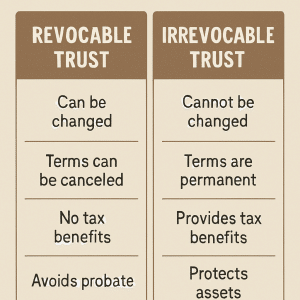Living with a disability can have negative impacts both physically and mentally. Social Security Disability Insurance (SSDI) may be able to provide you and your family some financial relief if you are unable to work due to a disability.
The SSDI qualification process is complicated; this guide provides a broad overview that should help you decide if you can apply for disability or if you can bypass the application process due to the Social Security Disability 5 year rule.
What is the Social Security Disability 5 Year Rule?
The Social Security Disability 5 Year Rule eliminates the required waiting period to receive disability benefits for individuals who were previously entitled to benefits, ceased collecting them, and again become unable to work any time within 5 years.
This means if you received SSDI benefits within the last five years, stopped receiving them, and then need them again, you can begin to get your benefits back faster.

How Does the Social Security Disability 5-Year Rule Work?
No waiting period is required if you were previously entitled to disability benefits any time within 5 years of the month you again became disabled.
If, within a span of five years after your benefits have been discontinued, your income falls below the threshold of “substantial gainful activity” determined by the Social Security Administration (SSA), you have the opportunity to resume your monthly SSD benefits without the need to reapply and undergo the initial application process once again.
By simply reaching out to the SSA and notifying them of your inability to sustain employment, whether it be in your recent job or any other job in the broader economy, your benefits will be reinstated promptly.
This provision allows for a seamless transition back into receiving the necessary support for your disability.
Key Benefit of Qualifying for the Social Security Disability 5 Year Rule:
- You do not have to reapply for benefits if you attempt to re-enter the workforce only to find out you are not able to continue to work.
What are Social Security Disability Benefits?
Social Security Disability Insurance (SSDI) is a social insurance program under which workers earn coverage for benefits, by working and paying Social Security taxes on their earnings. The program provides benefits to disabled workers and to their dependents.
For those who can no longer work due to a disability, our disability program is there to replace some of their lost income.
The Social Security Administration (SSA) wants to reserve its trust fund assets for individuals with disabilities that remain severe and who are unable to return to work. To encourage disabled workers to at least try to work if they feel they are up to it, the SSA established the Trial Work Period (TWP) program.
The Social Security Act defines disability very strictly. To receive disability benefits, a person must meet the definition of disability under the Social Security Act (Act). A person is disabled under the Act if they can’t work due to a severe medical condition that has lasted, or is expected to last at least one year or result in death.
The person’s medical condition(s) must prevent them from doing work that they did in the past, and it must prevent them from adjusting to other work.
How to Qualify for Disability Benefits
In order to qualify for Social Security Disability Benefits you must:
- Have enough social security earnings to be insured for disability
- Apply
- Have a disability, or you are not disabled, but you had a disability that ended within the 12-month period before the month you applied; and
- Have been disabled for 5 full consecutive months. This 5-month waiting period begins with a month in which you were both insured for disability and disabled. Your waiting period can begin no earlier than the 17th month before the month you apply—no matter how long you were disabled before then. No waiting period is required if you were previously entitled to disability benefits any time within 5 years of the month you again became disabled.
Conclusion & Additional Resources
In conclusion, the Social Security Disability 5 Year Rule plays a significant role in retirement planning for individuals with disabilities. Understanding the rule’s requirements, its impact on retirement benefits, and the available types of Social Security disability benefits is crucial.
Additionally, considering annuities as a supplement to your benefits can provide financial stability during retirement. By following the guidelines outlined in this comprehensive guide, you can make informed decisions that align with your long-term financial goals.
Remember, seeking professional advice tailored to your specific circumstances is always recommended when dealing with Social Security disability benefits and retirement planning. Embrace the knowledge gained from this guide, and take proactive steps towards securing your financial future.
















